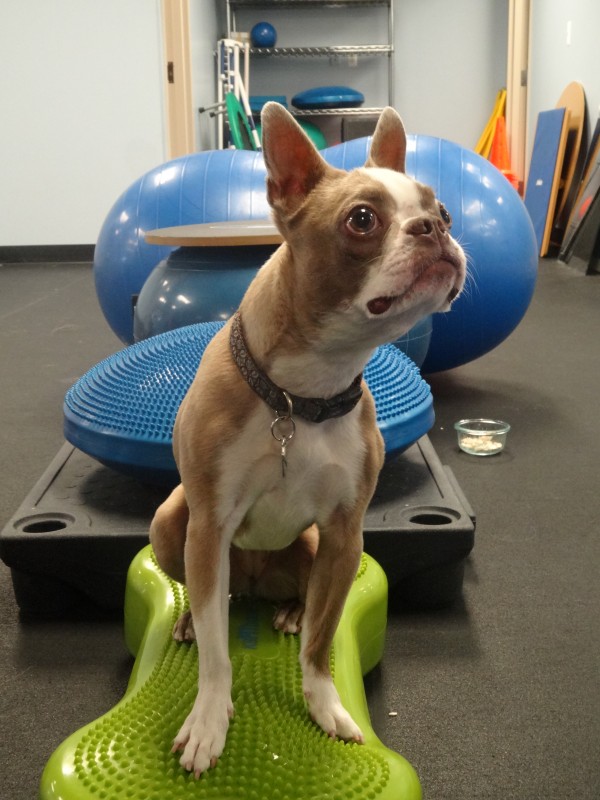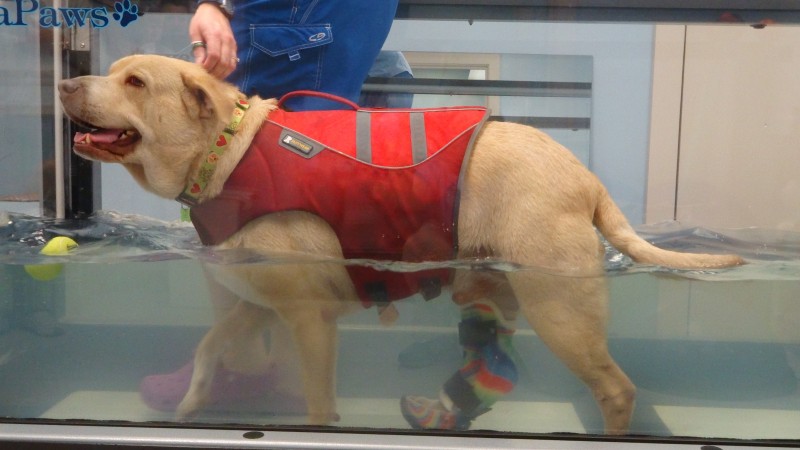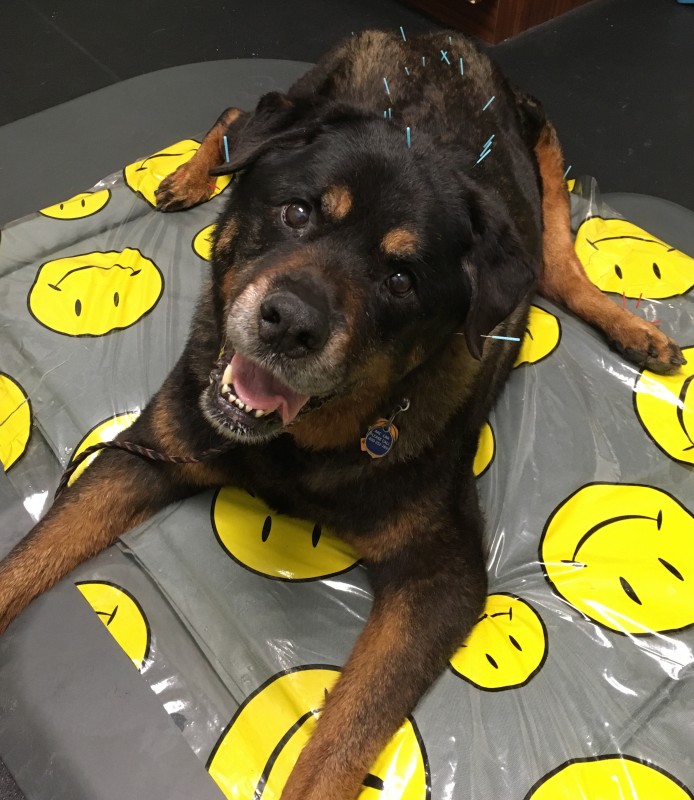The Crazy Little Thing Called Rehab
by Kim Schur
Veterinary Physical Rehabilitation for Pets – REALLY?
If you have never heard of Veterinary Physical Rehabilitation, you are not alone! Many people don’t realize it is even available. Human doctors often recommend physical t
herapy to their patients prior to surgery, after surgery, for the treatment of injuries, and for pain management. We know the benefits, so why not give our furry family members the same excellent care?
What is Veterinary Physical Rehabilitation?
Rehabilitation therapy for animals is very similar to physical therapy for humans. Rehabilitation techniques can be used to decrease pain, reduce inflammation and increase mobility to improve quality of life for veterinary patients.
What types of prob
lems can benefit from treatment?
Almost any disease process or injury that affects mobility can benefit from physical rehabilitation.
- Arthritis
- Post-Surgical (broken bones, torn ligaments, etc.)
- Neurologic (due to spinal issues, degenerative disease, etc.)
- Obesity
- Athletic Conditioning
- Limb Deformities
What type of treatment will my pet receive?
To begin with, your pet will receive an initial exam and evaluation. This includes a physical examination, goniometry (measuring the range of motion of the joints), stance analyzer (detects the percentage of weight a patient places on each limb), thigh & shoulder muscle mass measurements, pain assessment, and more.
Once the evaluation is complete, Dr. Kern will go over her findings with you and recommend a treatment plan for your beloved pet. Future rehabilitation appointments will most likely include several different modalities, based on what will be most beneficial for each individual patient.
 The following is a list of some of the modalities we offer:
The following is a list of some of the modalities we offer:
- Therapeutic Exercises
- Underwater Treadmill
- Massage
- Class IV Laser Therapy
- Acupuncture or Electro-acupuncture
- Veterinary Spinal Manipulation (aka “veterinary chiropractic”)
- Therapeutic Ultrasound
- Massage Therapy
- Neuromuscular Electrical Stimulation (NMES) and/or Transcutaneous Electrical Nerve Stimulation (TENS)
- Acoustic Compression Therapy (aka Shock Wave)
What is the cost of treatment?
Treatment varies based on your pet’s condition and can change based on your pet’s progress, therefore it is difficult to give an exact amount. Once your pet has been evaluated, we will have a better idea regarding their particular needs.

